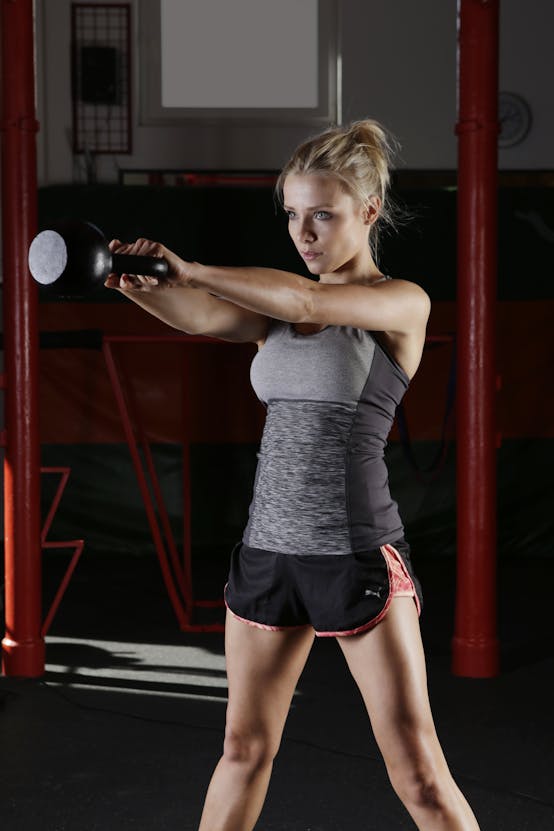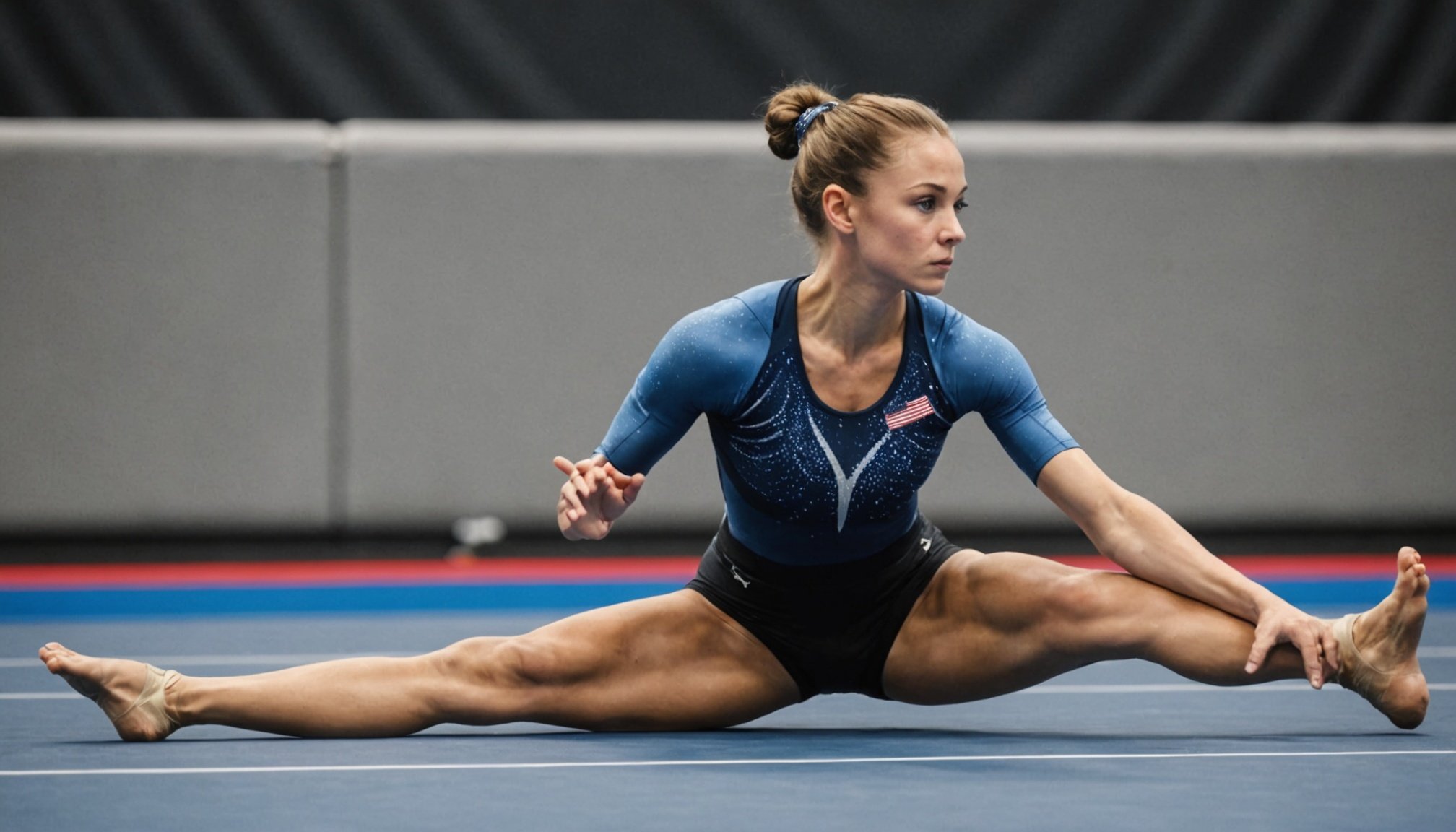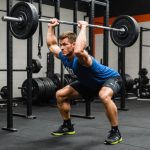Overview of Dynamic and Static Stretching
In the world of gymnastics training, understanding the distinctions between dynamic stretching and static stretching is crucial. Both techniques play essential roles in performance enhancement but operate quite differently.
Dynamic stretching involves active movements that stretch the muscles through their range of motion. This type of stretching is typically performed before workouts or competitions, as it helps to increase blood flow and prepare the body for physical activity. It aids in warming up the muscles, which is vital for gymnasts to maximise performance and minimise injury risk.
Also to read : Revolutionizing Athlete Performance: Harnessing Wearable Technology to Combat Overtraining in Professionals
On the other hand, static stretching focuses on holding a stretch for a set period, usually after a workout. This method helps to increase flexibility and is essential for muscle recovery. Gymnasts particularly benefit from static stretching as it allows muscles to elongate and recover from intense physical exertion, contributing to overall performance enhancement.
Both stretching techniques offer unique benefits that enhance athletic performance. Dynamic stretching is great for activating muscles and improving agility, while static stretching aids in flexibility and recovery. By incorporating both into a training regimen, gymnasts can ensure they are optimally prepared for the demands of their sport.
This might interest you : Top Ankle Strengthening Exercises Every Basketball Player Should Try for Peak Performance
Benefits of Dynamic Stretching
Incorporating dynamic stretching into your warm-up routine offers a multitude of advantages, essential for anyone aiming to improve their athletic performance. It primarily enhances range of motion and flexibility, giving your muscles the ability to move more freely and effectively. This increased mobility is crucial for more dynamic and complex movements in various sports.
Another notable benefit is the enhanced blood flow and muscle activation. Dynamic stretching optimises circulation, ensuring that muscles are well-prepared for the exertion of an upcoming workout. This proactive approach reduces the risk of injuries, allowing athletes to perform with greater intensity and confidence.
Research consistently supports these advantages. Studies have shown that engaging in dynamic stretching before physical activities significantly improves performance metrics like speed, strength, and endurance. Participants who incorporate dynamic stretches into their routine frequently experience better results than those relying solely on static stretching or no warm-up at all.
Setting up a comprehensive warm-up with dynamic stretches not only primes your body for the physical demands ahead but also realigns your mindset, ensuring optimal preparation and concentration before diving into your exercise regimen.
Drawbacks of Dynamic Stretching
Dynamic stretching has become popular for its potential benefits, yet it also possesses certain limitations. If not performed correctly, it can increase the risk of injury. The rapid movement of muscles and joints, if done excessively or without proper form, can lead to strains or sprains.
Moreover, it isn’t suitable for every athlete’s recovery. Some individuals, particularly those recovering from injuries or with specific muscle fatigue issues, may find dynamic stretching inadequate. It could potentially exacerbate existing conditions, highlighting the importance of tailor-made recovery plans.
In certain situations, dynamic stretching may prove less effective. For example, endurance athletes who require long-term stability rather than immediate flexibility may not benefit significantly. Additionally, it does not always address the need for slower, controlled stretching, which can be crucial in specific training or recovery routines.
Therefore, while dynamic stretching offers advantages, understanding its limitations and tailoring it to individual athletic needs is essential to maximise performance and minimise potential risks. Always ensure that dynamic stretching is conducted with proper guidance to ensure its effectiveness and safety.
Benefits of Static Stretching
Static stretching offers numerous benefits that contribute to enhanced physical health and performance. One noteworthy advantage is improved flexibility, which plays a pivotal role in a broad range of physical activities. By regularly incorporating static stretching into your routine, you can enhance the length and elasticity of muscles and connective tissues, thereby supporting greater range of motion.
In addition to boosting flexibility, static stretching is integral to post-exercise recovery. It aids in reducing muscle soreness by improving blood flow, which helps in the removal of metabolites and delivery of oxygen and nutrients to fatigued tissues. Through systematic stretching, athletes and fitness enthusiasts may experience less discomfort following physical exertion, allowing for quicker recovery and more frequent training sessions.
Moreover, there is compelling evidence that suggests static stretching’s role in maintaining muscle health. It helps balance muscle tension, preventing the onset of imbalances that can lead to injuries. By keeping muscles flexible and healthy, static stretching supports overall well-being and enhances performance over time. Fostering these habits can ensure a more sustainable and injury-free fitness journey.
Static stretching proves to be a vital component for anyone looking to improve muscular functions and sustain an active lifestyle.
Drawbacks of Static Stretching
Static stretching, while popular, has several limitations that can impact athletic performance. Research indicates that performing static stretches before a workout might reduce strength and power. This is particularly critical for activities requiring explosive movements, such as sprinting or weightlifting. Therefore, the timing of static stretching is essential. Executing these stretches post-workout can aid recovery, but doing them pre-workout may not be ideal.
Additionally, static stretching is often inappropriate during high-intensity training sessions. Intense activities demand muscles to be warm and agile, traits not necessarily promoted by static stretching. Its performance impact can lead to reduced muscle responsiveness, impacting overall workout efficacy.
Furthermore, there’s a common misconception regarding static stretching’s role in warm-up routines. Many individuals assume static stretching is the best way to prepare the body for exercise, but dynamic stretching is more suitable as it increases muscle temperature and prepares the body more effectively for physical activity. Understanding these nuances allows athletes and fitness enthusiasts to better structure their routines, aligning their stretching practices with the goals of their workouts and reducing the risk of potential drawbacks.
Comparative Analysis of Dynamic vs Static Stretching
In the realm of gymnastics training, understanding the comparison of stretching techniques is crucial for enhancing performance. Dynamic stretching involves moving parts of your body through a full range of motion, aiming to increase blood flow and prepare muscles for activity. It is often beneficial before workouts or routines as it elevates body temperature and neuromuscular readiness. Conversely, static stretching entails holding a position for a period, focusing on elongating the muscles, best employed post-exercise to improve flexibility and aid recovery.
Performance impacts vary, with dynamic stretching being linked to altitude in power and agility, key components in gymnastics. It primes muscles for explosive movements, which can be crucial during dynamic routines. Static stretching has been shown to enhance long-term flexibility, beneficial for the intricate positions required in gymnastics. Research findings suggest a balanced approach within training regimens – using dynamic techniques to warm up before sessions and static methods during the cool-down phase can optimize performance outcomes. Gymnasts should judiciously incorporate both styles based on their specific goals, such as flexibility versus immediate muscle readiness, to maximize the effectiveness of their training.
Practical Recommendations for Gymnasts
For gymnasts, employing the correct stretching routines is crucial for both performance and safety. Integrating effective training tips can help enhance flexibility, strength, and overall athleticism. Start with a dynamic stretching routine as part of your warm-up to prepare muscles and increase blood flow. This might include activities like leg swings, arm circles, and torso twists.
Transition into static stretching post-workout as a cool-down to help relax muscles and improve long-term flexibility. Holding stretches such as splits, wall stretches, or shoulder stretches for about 20-30 seconds can be beneficial.
Guidelines for Integrating Stretching Techniques
- Dynamic Stretches: These should mimic movements in gymnastics, enhancing agility and muscle readiness.
- Static Stretches: Focus on areas prone to tightness or where flexibility gains are sought.
Individualized Approach: Tailor routines based on personal needs and the demands of specific gymnastic events. For instance, a high bar performer may focus on shoulder flexibility, whereas a floor exercise gymnast might prioritize leg and hip mobility.
Implement these techniques regularly for progression in performance and reduced injury risks. Recognize your body’s signals and adapt routines as needed to ensure they remain beneficial and safe.













